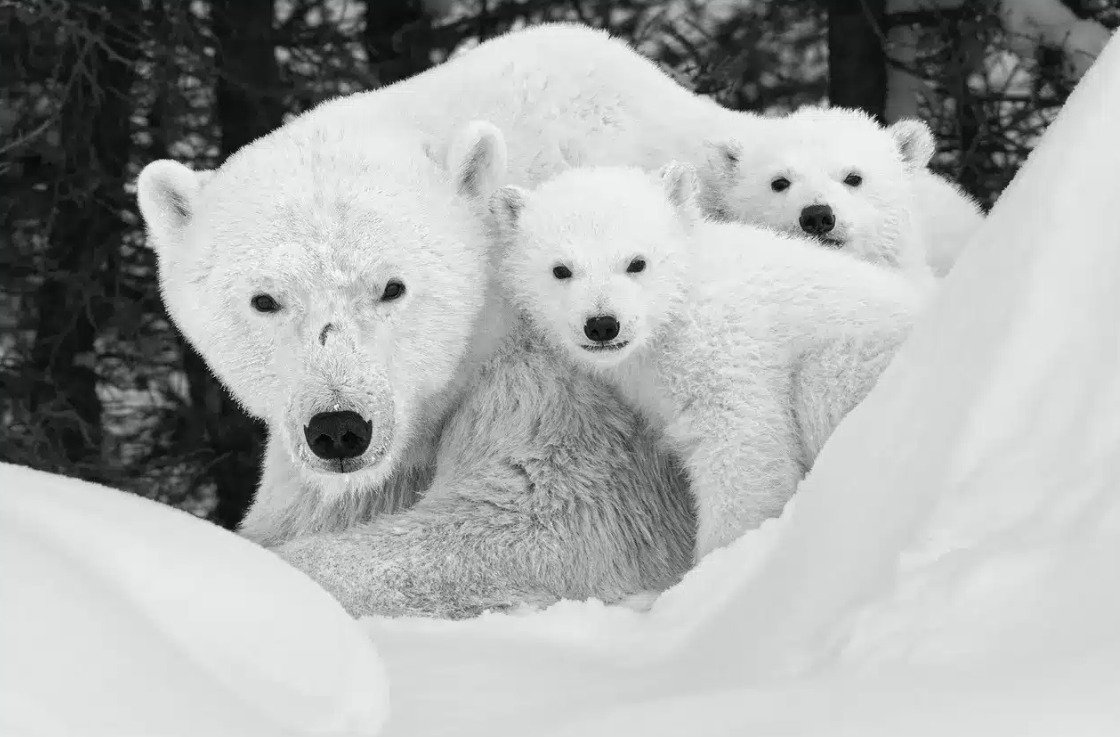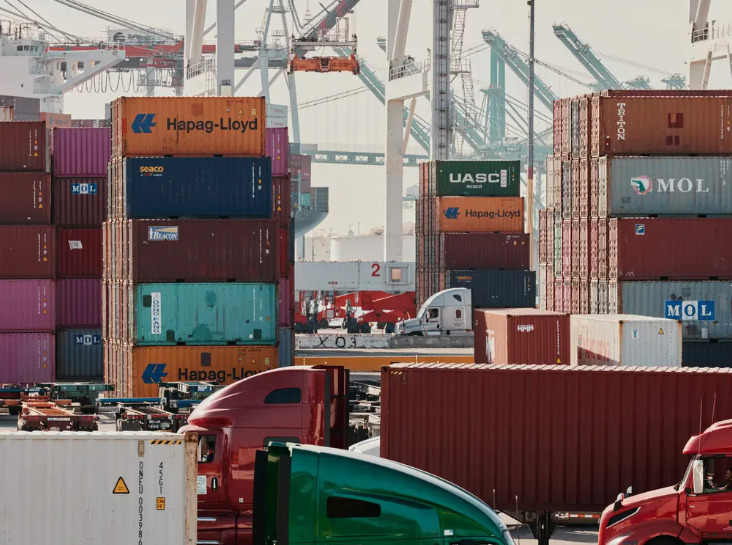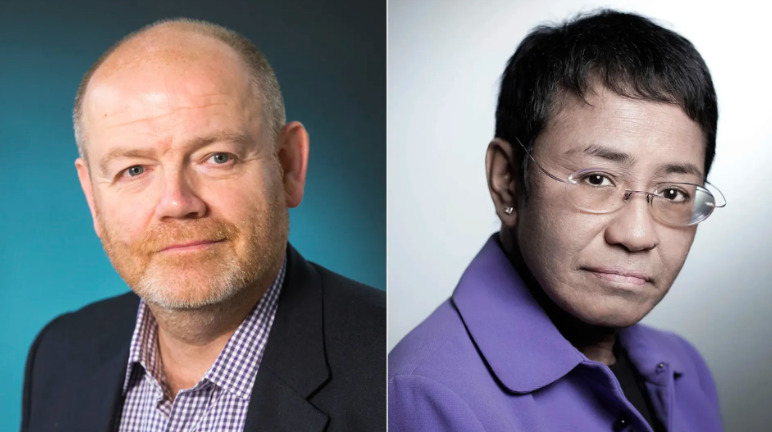
Paul Nicklen: A Reverence for Nature
Standing in front of any of Canadian photographer Paul Nicklen’s large-scale images in the current exhibition at Hilton Contemporary, one cannot help but be totally…
Thought Leader: Paul Nicklen

This piece is by Cristina Mittermeier.
As we approach the end of the year, a realization struck me: It’s been exactly one year since Paul and I started writing for Katie Couric Media (and eight months since the launch of the Ripple Effect newsletter). What a busy time it’s been, from conservation wins to climate-related disasters. Through it all, I feel an overwhelming sense of gratitude and hope as I look back at what we’ve covered.
Our journey with Katie started early last year, when Paul and I invited her and John on a three-day excursion on our boat, the SeaLegacy 1. We sailed from Loreto in Mexico’s Gulf of California, searching for blue whales. During our time together, while Katie cooked for the crew and John captained the ship, we had many meaningful discussions about conservation and how we could do our part to have the most significant impact on ocean conservation.
Many people are understandably skeptical when it comes to supporting marine conservation. Why does it matter, and what exactly do we do? More importantly, does our work have any measurable impact?
This last point can be frustrating. Marine conservation is often a complex, behind-the-scenes effort. The work to protect our oceans isn’t always visible on the surface. It involves long-term planning, research, and coordination, with results that might not be seen for years.

Conservation is achieved through interconnected actions— from science and policy to education and restoration, all the way to advocacy. It takes a diverse community in which each role is essential. SeaLegacy’s niche is all about connection. We tap into people’s love for the ocean, bringing them face-to-face with the urgent realities through powerful, intimate imagery and connecting our audience to the policymakers who actually make things happen. Our photos reveal the ocean’s vulnerability, capturing raw moments that make us feel compelled to act. With partnerships worldwide, we provide pathways for learning, engagement, and making a difference.
This year, I was privileged to visit Makaha on the Hawaiian island of Oahu, a community of locals and Indigenous Hawaiians whose connection to the ocean runs deep. Away from the tourist-heavy parts of the island, Makaha is where people come together to surf, play dominoes under the shade of beach trees, and share stories. This deep connection to the sea is something shared by Indigenous communities across the Pacific. In places like French Polynesia and New Zealand, traditional practices like rāhui — a temporary, community-based ban on fishing — have preserved marine ecosystems for centuries.

When I attended WILD12, the World Wilderness Congress, we listened to Indigenous leaders as they emphasized the need to support Traditional Knowledge and Values in our fight to protect the world’s remaining wilderness. While there, I proposed a resolution to support the ratification of the High Seas Treaty, which is essential to protect 30% of our oceans by 2030.
It offers a legal framework for marine protected areas beyond national borders, which recognizes the vital role of Indigenous stewardship in conservation. Since WILD12 in late August, more countries have come on board, and we’re now at 14 ratifications, moving toward our goal of 60. This process is monumental, and it will take participation and commitment from a global community to keep the momentum going.
We are continually reminded just how underfunded conservation work really is. The U.S. spends hundreds of billions every year on the military, but when it comes to protecting our oceans (and all biodiversity), the budget barely scratches the surface. That’s why we launched our 100 for the Ocean campaign for a second year, tapping into SeaLegacy’s network of renowned photographers to sell prints and raise funds for ocean protection. Through the power of imagery, we’re bridging the funding gap and supporting NGOs doing critical work on the front lines.

One NGO benefitting from this campaign is New Zealand-based Young Ocean Explorers. We collaborated with them on a Sea of Hope episode to highlight their mission of educating the next generation in New Zealand, where less than 1% of the ocean is fully protected. They inspire young people to learn about and fall in love with the sea, creating a ripple effect that will make all the difference for future conservation efforts.
Pacific Northwest-based Oceans Initiative is another key organization we’re supporting. While they work on marine mammals around the world, their core research is on the impact of vessel noise on orcas in the Pacific Northwest. It shows how human activities disrupt these animals’ ability to hunt salmon. This vital work directly informs policy-makers on how to reduce our impact on these iconic species.
Then there are the Coral Gardeners, who grow resilient coral species to restore degraded reefs in French Polynesia, using A.I. to fuel their efforts. After a particularly devastating global coral bleaching event this year, their work is essential to give reefs a fighting chance. Paul and I also visited our friend, Dr. Emma Camp, on Heron Island along the Great Barrier Reef to witness the bleaching first-hand. Dr. Camp and her team are researching hardy corals that might help reefs survive warming waters.
In the 10 years since SeaLegacy was created, we have also used our reach to highlight the damage caused by the salmon farming industry, which has devastating effects on wild salmon populations and wild habitats in Canada and many other countries. Through public awareness and pressure, we, along with a large community of advocates and First Nations, have successfully influenced policy changes, leading the Canadian government to roll out a draft plan that phases out open-net salmon farms by 2029.
Change often starts with a story that resonates and sparks action. A great example of this is the conservation success in South Georgia and the South Sandwich Islands in the sub-Antarctic, which received the highest marine protected area designation, thanks to global advocacy. Over the past 20 years, Paul and I have visited and worked in this area, which is rich in biodiversity. It requires patience and persistence to demonstrate how stories can spread, rally communities, and ultimately drive real change. It’s a testament to the power of collective action and the stubborn collaboration required to protect our oceans. Sometimes, the work takes time, but the results are worth it.
This is what Ripple Effect is all about. It’s about bringing these stories to you, providing the latest science and information about the ocean’s most pressing issues, and offering you, our readers, opportunities to join our efforts to leave the sea a little better off than when we started. Paul and I are so excited to continue to share our journey with you over the next year — and, as always, pass along more information about how you can help.
Paul Nicklen: A Reverence for Nature
Standing in front of any of Canadian photographer Paul Nicklen’s large-scale images in the current exhibition at Hilton Contemporary, one cannot help but be totally…
Thought Leader: Paul Nicklen
Peter Goodman: Exploding Pagers Deliver a Supply Chain Warning
This piece is by WWSG exclusive thought leader, Peter Goodman. The lethal detonation of hand-held pagers and walkie-talkies used by Hezbollah militants this week in…
Thought Leader: Peter Goodman
Sara Fischer: International Fund for Public Interest Media looks to raise $150M
This piece is by WWSG exclusive thought leader, Sara Fischer. An international fund that supports independent media on Wednesday unveiled an ambitious plan to raise…
Thought Leader: Sara Fischer

